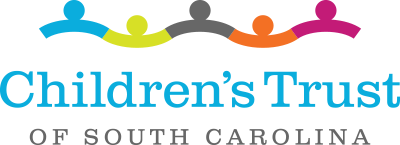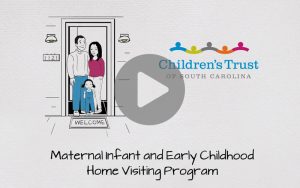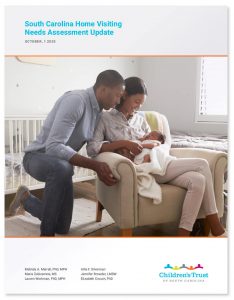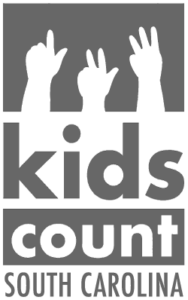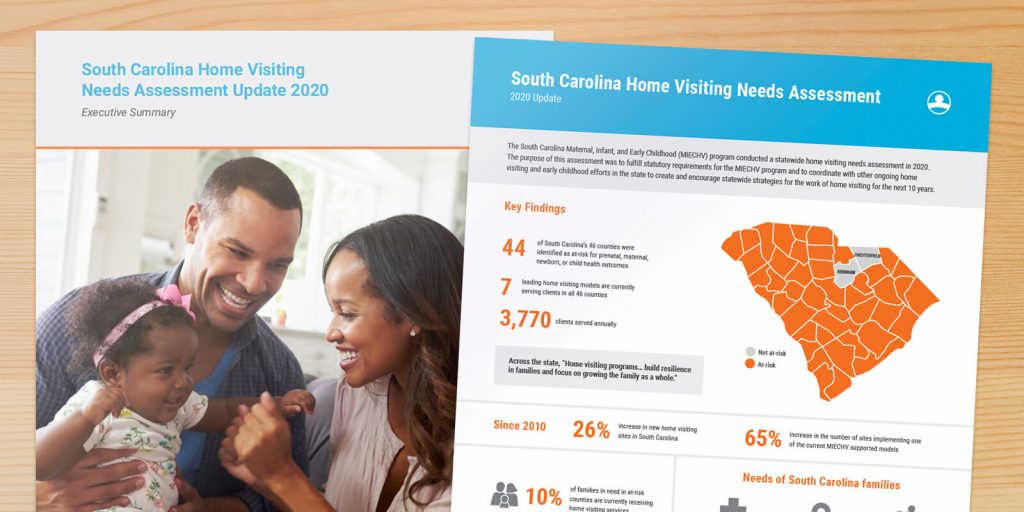
As South Carolina’s lead agency for the Maternal, Infant, and Early Childhood Home Visiting (MIECHV) federal grant since 2010, Children’s Trust has taken a leadership role in working with partners to deliver home visiting programs across the state.
Children’s Trust supported sites in 40 of South Carolina’s counties to provide more than 17,000 home visits over the past year with funding from the U.S. Health Resources and Services Administration’s (HRSA) Maternal and Child Health Bureau. Home visiting programs address critical areas of child well-being, which include a concentration in improving maternal and child health, preventing child abuse and neglect, encouraging positive parenting, and promoting child development and school readiness.
As part of national legislation, MIECHV state grantees were required to conduct a state needs assessment for home visiting no later than Oct. 1 of last year. Since the previous needs assessment in 2010, home visiting programs have greatly expanded their reach.

Cathy Ramage
Cathy Ramage, director of home visiting for Children’s Trust, noted the value of this updated assessment completed by a pair of partners – the Rural and Minority Health Research Center and the Core for Applied Research and Evaluation, both at the University of South Carolina’s Arnold School of Public Health.
“We were pleased to have so many partners and stakeholders in home visiting and beyond come together around this needs assessment,” Ramage said. “We really see this assessment as not only driving home visiting work in the state but also providing valuable information that can inform early childhood initiatives and building systems to best serve communities. So much of South Carolina continues to be at risk, and family needs are diverse and complex. It’s going to take many sectors continuing to come together around common goals to address the needs of families in our state.”
Explaining the Need for Home Visiting
The 2020 Home Visiting Needs Assessment Update (PDF) was researched and written by the Arnold School’s Melinda A. Merrell, Ph.D., MPH; Maria McClam, MS; Lauren Workman, Ph.D., MPH; Allie F. Silverman; Jennifer Browder, LMSW; and Elizabeth Crouch, Ph.D. This group also has produced an executive summary (PDF) and an infographic (PDF) from this information to go with the update.
Merrell participated in a recent webinar, “Understanding the South Carolina Home Visiting Needs Assessment,” hosted by Children’s Trust for those in the home visiting field, to explain the report in greater depth.
“First and foremost, this was information that was provided to HRSA to allow them to identify and compare relative areas of need across different states. South Carolina shows up as having significant need, and I think a lot of us would agree with that,” Merrell said. “These findings confirm what many of us here today already know and experience in our day-to-day work, which is that the local environments many families experience in our state are putting them at risk for poor outcomes.”
She added that “home visiting is a primary way that we can support families in overcoming these challenges. The report clearly identifies that families in the vast majority of our state may benefit from the use of home visiting services.”
Several key data points emerged from the report. The overall number of home visiting sites has grown 26 percent since 2010, and the number of sites implementing three of the main evidenced-based home visiting models – Healthy Families America, Nurse-Family Partnership and Parents as Teachers – has increased 65 percent. There are currently seven home visiting models being used in the state, including at least one in every county. Of the 46 total counties, 44 were identified as at-risk due to poor prenatal, maternal, newborn, or child health outcomes.
This assessment focused on four areas of need within home visiting:
- Identification of communities with concentrations of defined risk factors;
- Assessment of the quality and capacity of home visiting services;
- Assessment of the state’s capacity for providing substance use disorder treatment and counseling services; and
- Current coordination with other recent maternal and child health-focused needs assessments.
In the webinar, McClam discussed the findings from a 2020 home visiting stakeholder survey that she helped guide, which further informed the report. Survey participants suggested ways to improve efforts to reach families that have great needs.
Suggestions included allocating more funds for home visiting programs; promotion and education of home visiting services to families in communities; hiring qualified staff members that represent minority populations or staff members who are bilingual; adapting services to include options for virtual visits; providing universal home visiting and care coordination; using community health workers as a liaison between communities and the programs; and creating a statewide referral system.
“Overall, survey participants perceived that their community has low levels of infrastructure and leadership prioritization, but high levels of buy-in for implementation of home visiting programs,” McClam said.
Advancing Home Visiting in Communities
Home visitors – who can be nurses, social workers, or child development specialists – support preventive health and prenatal practices for mothers and young children, help parents understand developmental milestones, promote the use of positive parenting techniques, and work with mothers to set goals for the future, continue their education, and find employment and child care solutions. The report confirmed the positive connections they have made with the families they serve, and the need for expanded home visiting is clear.

Eric Bellamy
Eric Bellamy, chief partner engagement officer at Children’s Trust, has managed home visiting efforts at the organization since 2010, and he believes the needs assessment update can provide direction for everyone involved in the field. That includes the South Carolina Home Visiting Consortium, which focuses on providing workforce development to professionals in the state and brings together the different entities to streamline efforts around data collection, common outcomes, and advocacy efforts to have a collective impact around home visiting.
He explained in the webinar what it can mean as this work advances in communities.
“As leaders in your communities and within your organizations, you’re thinking about innovative ways to move the path forward and look at how we can really transition from where we are and where we’ve been with home visiting early childhood initiatives to a more collective, efficient and effective space,” he said.
Bellamy hopes to use the information to target the needs of the service providers in the communities – including the feedback they give – and help them build their capacity to grow home visiting efforts.
“We see this as more of an opportunity to build those collaboratives, to build those conversations, and to continue to reach out to folks that you may not traditionally work with to say, ‘Hey, how do we work better together? How do we build a better system? And how do we advocate together for it?’”

